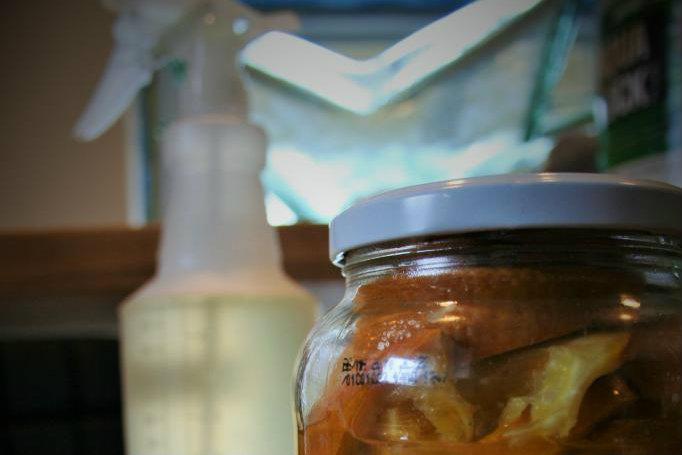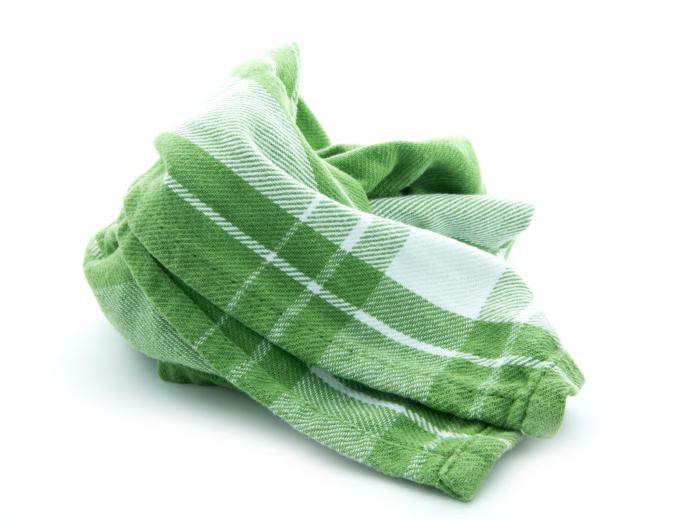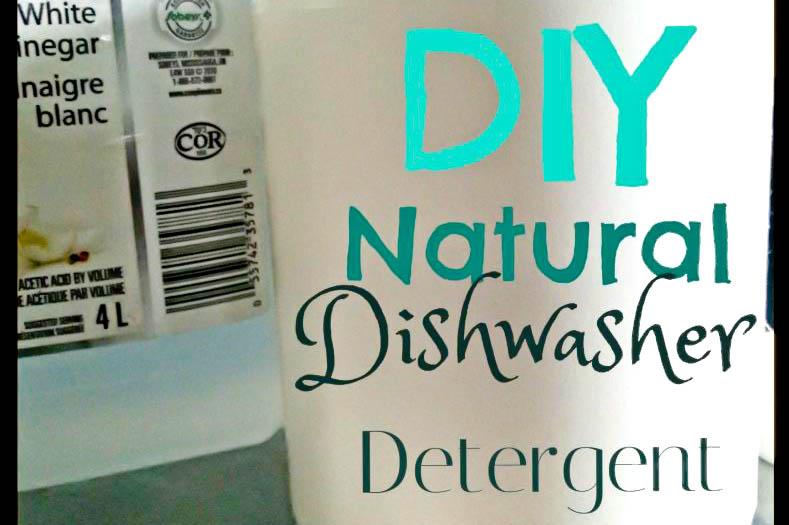I’ve always been careful to avoid germs and unnecessary chemical exposure, but now that I have a toddler and a baby in utero, I’m downright paranoid about it.
When I used store-bought cleaners, this was kind of a vicious circle of worrying. I would slice up some raw chicken for supper and could practically see the salmonella parading around the counter, so I’d shoot it with all-purpose cleaner. My son, Toby, would pat his grinning reflection in the window with sticky fingers and the dog would helpfully lick it “clean,” so I’d grab a bottle of window cleaner and give it a swipe. I’d gotten rid of the germs, but then I’d potentially covered the counter where I prep food and the window that the dog—and probably the kid—lick in harmful chemicals.
Once upon a time, my solution to this conundrum was to buy a “green” cleaner from the grocery store. Sure, they were a little more expensive, but they were totally worth the extra price to breathe a little easier, right? Well… maybe not so much. Often these products are just “greenwashed," or spun to appear more environmentally friendly than the alternative. The ingredient list will show you that most items are plant derived, but things like sodium lauryl sulfate or silicone antifoaming agents are still not wildly desirable. The bottom line is that I do believe them to be the lesser of two evils if you are buying a commercial cleaner, but I don’t even bother buying commercial cleaners anymore. Homemade is best!
But do homemade cleaners really get things clean?
Short answer? Yes. Yes they do!
The main ingredient that I use—and most people use, for that matter — is vinegar. White vinegar is not only inexpensive but also a natural cleaning superhero: it disinfects, deodorizes, and cuts grease, mainly by way of its acetic acid content (which is generally 5 percent).
Vinegar “crosses the cell membrane of bacteria then prompts a release of protons, which causes the cell to die,” according to Philly.com, which cites a a 2011 report by Canada’s National Collaborating Centre for Environmental Health. Hence vinegar’s disinfecting power. Apparently, odor-causing molecules are made up of double bonds which are susceptible to being broken, and the acidity of vinegar will crack them open for you, which is a very small-scale explanation of how deodorizing works. This same acid content is what eats through grease. Since you can also use it to season salads, I’d say vinegar is a nice, versatile thing to keep in your kitchen and to clean it with.
Now, I know a lot of folks, my husband especially, will say, “But vinegar stinks!” When I first started making my own cleaners, I got a lot of black looks because of the vinegar-y pall that hung over me during cleaning sessions. But the good news is that when vinegar dries, the scent virtually disappears. Even better than that news is this tip: if you infuse your vinegar with lemon rinds, it smells lovely and lemony and like the cleaners you might be used to! All you have to do is stick a few lemon rinds in a jar, pour some white vinegar over them and let it sit for about two weeks, shaking the jar every now and again.
If you just use a little at a time and keep adding more vinegar, this jar will last you for months and will get more lemony as time goes on. When the peels start to disintegrate (which hasn’t happened to me yet), chuck them and start fresh. Since I’ve started doing this, I have had zero complaints about vinegar smell and so… Yay! Success! Now you’ve got a germ killer that also smells nice.
So now that you know why you want to clean with vinegar (and how to set it up to smell nicer), I will tell you my favorite all-purpose cleaner recipe.

To see Joc’s favorite recipe, continue reading “Homemade All-Purpose Cleaner,” at LittleBoozyHomemakers.com.
Tracy and Joc are sisters, wives, and mothers, and they love to make things with their own two hands. Read more of their great homemaking tips on their blog Little Boozy Homemakers.





